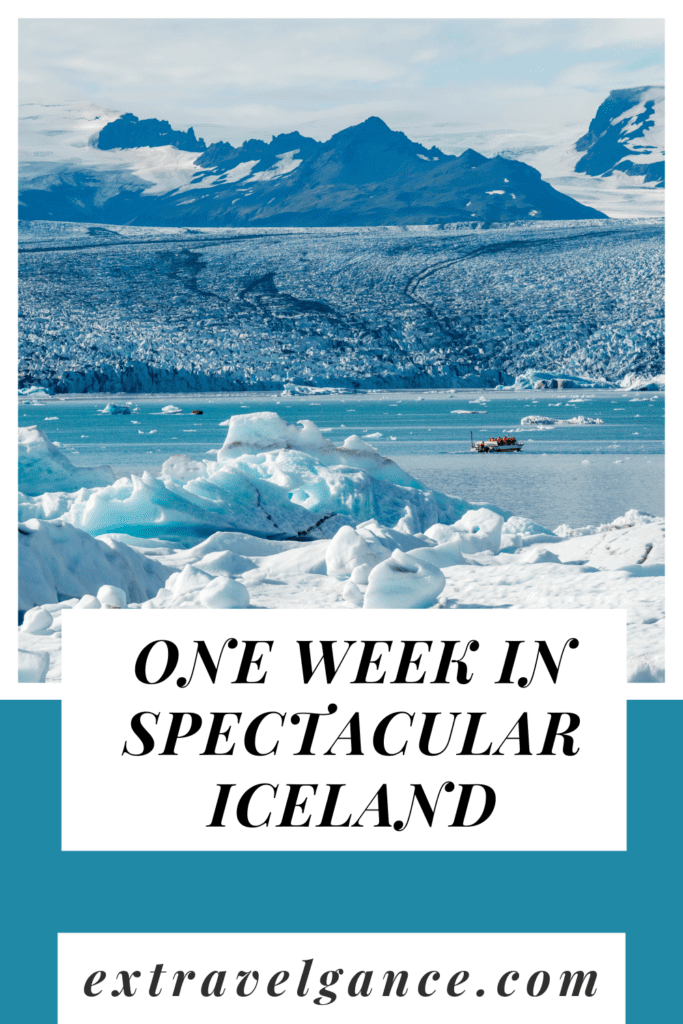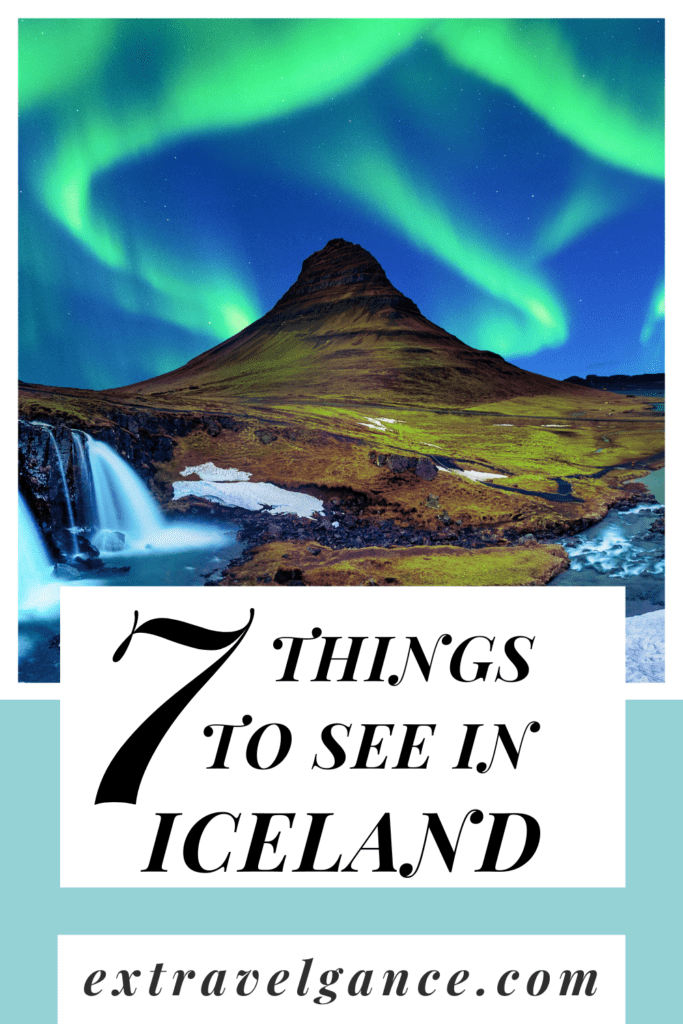
Iceland, the Land of Fire and Ice, is an incredible country to travel to year-round. If you are looking for majestic glaciers, active volcanoes, hot thermal pools, stunning waterfalls, breathtaking geysers, and a host of “Oh Wow” moments, then you must travel to Iceland!
In addition to being a geological wonder, Iceland is filled with rich history and amazing people. The capital city of Reykjavik also boasts a vibrant night-life with amazing restaurants and places to unwind and get to know the locals. It is impossible to list all the amazing things to see and do in Iceland, but be sure to check out these top 7!
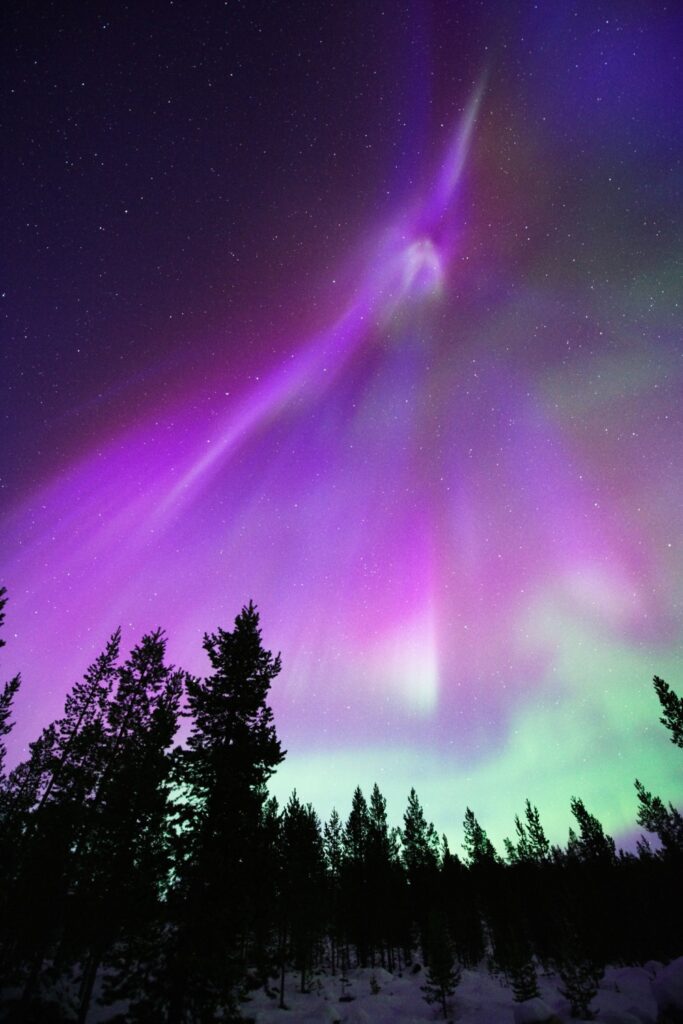
Experience the Northern Lights
While there are numerous reasons to travel to Iceland, experiencing the beauty of the Aurora Borealis (Northern Lights) tops them all in my book! Watching the heavens come alive in a dance of purple, gold, and green defies the senses. This amazing natural light show generally only occurs in the northernmost areas of the world and are quite elusive.
Conditions must be absolutely perfect for the sky to come alive with color. Thankfully, there are experts throughout Iceland that will steer you to the best locations and times to increase your chance of experiencing this wonder. If the Northern Lights are your number one reason to travel to Iceland, be sure to plan your trip between September and April!
If you want to skip the tour and go it alone for this experience, select a location as far from any light pollution as possible. Be sure to study How to Best Photograph the Northern Lights before you go!

Immerse Yourself in Icy Landscapes
One of the top reasons people travel to Iceland is to see the larger-than-life glaciers. Studies show that approximately 11% of the country is covered by glaciers. Also, Iceland is home to Vatnajökull, the largest glacier in Europe. This glacier actually covers about 8% of the entire country!
Don’t miss Jökulsárlón, located in southeast Iceland, to witness icebergs breaking away from the glacier. These incredible wonders create a play area for seals to swim between as they float in the lagoon and eventually out to the Atlantic. You can take a boat tour to “immerse” yourself in the experience. Or visit Diamond Beach, just a 5-minute walk away, to see icebergs wash ashore on jet-black sand.
If you visit in the summer, you might be surprised to find warmer days but winter is the season which inspired its name! If glaciers and floating icebergs aren’t cold enough for you, visit a blue ice cave or take a snowmobile tour!

Go Whale & Puffin Watching
Iceland offers some of the best whale watching experiences the world over. There are over 20 species of whales, dolphins, and porpoises in the Icelandic coastal waters. You can catch whale watching tours primarily from Akureyi, and Husavik but there are also some in Reykjavik.
If you make it north to the whale-watching capital of Husavik, depart from there. All locations are great, but Husavik is known for its fertile feeding grounds which attract an abundance of traffic. If whale watching is your top priority in Iceland, then you should plan to travel between Aril and September.

Don’t just watch for whales but also keep an eye out for the many other sea animals and birds you will encounter. Iceland is a particularly great place to go puffin watching. These amusing little birds feed by diving in the water and swim using a flying technique. In flight, they beat their little wings up to 400 times per minute!
If you are visiting between mid-April to mid-August, one of the best places to see puffins is Borgarfjörður eystri. Home to 10,000 pairs of puffins, Borgarfjörður eystri provides wooden platforms for visitors to get very close to the birds without disturbing them.
What Size Boat?
Whale watching tours are a great way to spend a few hours no matter what size boat you take. Big boats are wonderful for large tour groups and they have state-of the art technology to help them find whales. Smaller boats are quieter and able to get closer to the animals and are great for small groups.
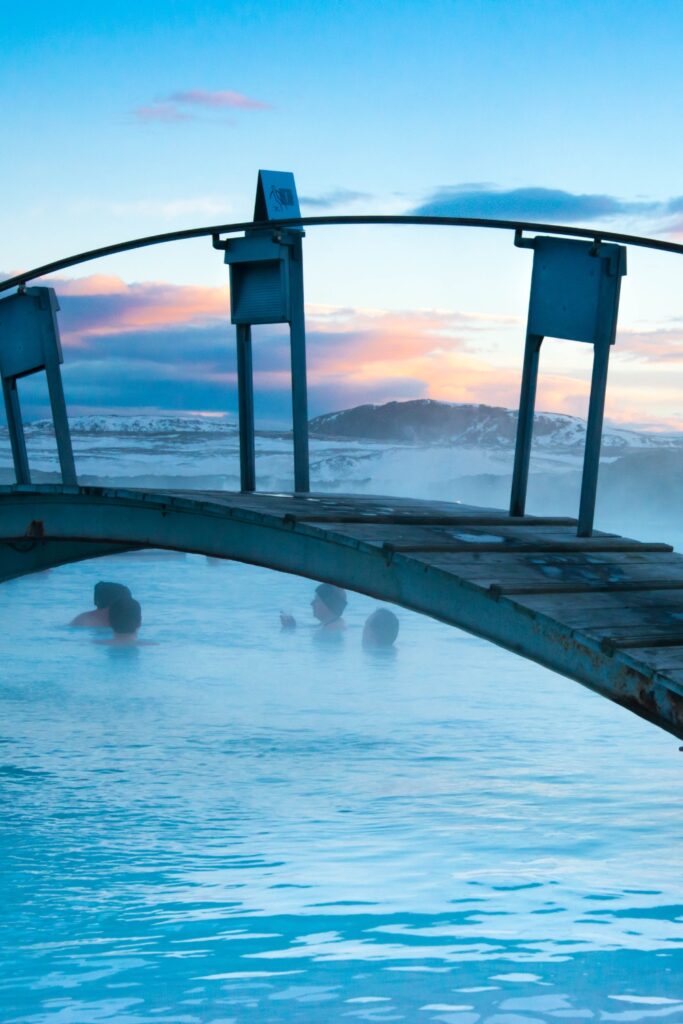
Float in the Blue Lagoon
As cold as Iceland is, it is also well-known for its amazing geothermal heated pools. Hot spring tours are a great way to relax your weary (and cold) bones after an overnight flight or a long day of touring.
Iceland is filled with fabulous pools but the best known is the Blue Lagoon. The Blue Lagoon is most definitely Iceland’s most famous spa. Visitors travel to Iceland specifically to soak in the warm soothing waters and to cover themselves in silica mud.
If your itinerary allows, you can stay overnight at the hotel in the lagoon. This has an added advantage of longer hours in a more private area, and a wake-up call if the Northern Lights are visible. Yes! You can totally float in the lagoon while watching the Northern Lights!
The Blue Lagoon is shockingly only a 10-minute drive from the airport. In fact, if you happen to have a long layover in Iceland, you can experience the soothing water and healing silica mud and still make your connecting flight.
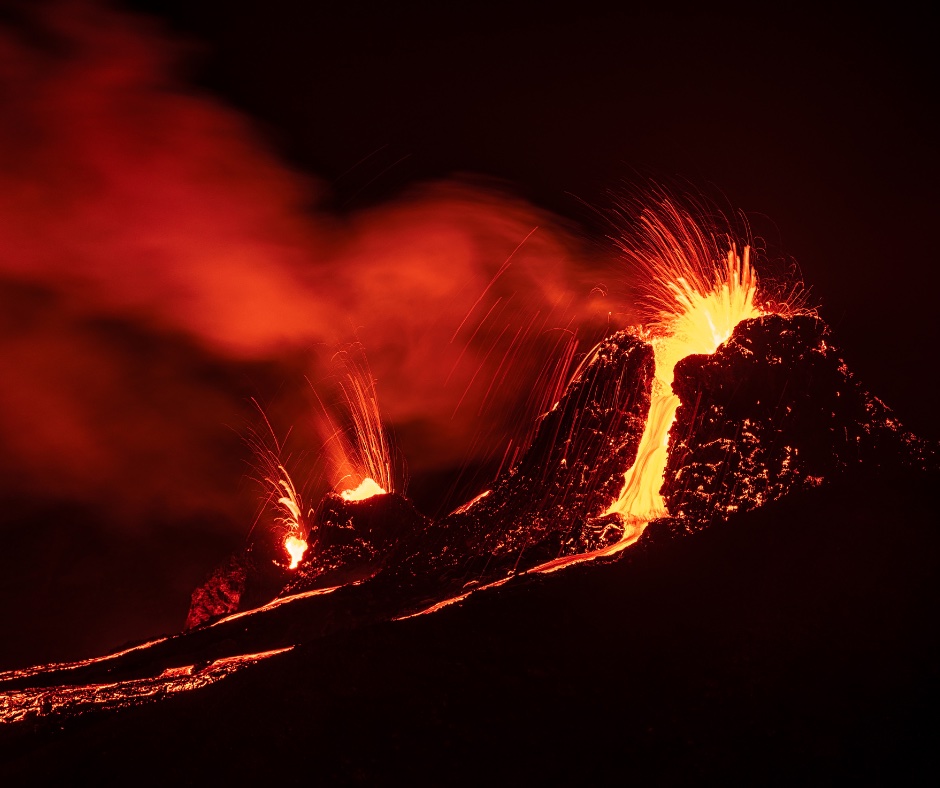
Get Up Close and Personal with an Active Volcano
Iceland is home to about 130 volcanoes. Surprisingly, most of these are active. In fact, the Westfjords areas is the only part of the island without an active volcano system. Don’t worry, active volcano systems do not equate to massive amounts of lava flying into the sky and covering every inch of the island.
If you have never gotten up close and personal with a volcano before, you should totally take a hike to one of the many active volcanoes on the island. Fagradalsfjall Volcano is only a 15-minute drive from the Blue Lagoon or 55 minutes from Reykavik. There are several different paths and you can hike the trail alone or hire an expert guide to lead you.
You do need to be fairly fit and mobile to take this hike. After all, you can’t park too closely. Most volcano hikes are about 10+ miles round trip and the elevation rises swiftly. The terrain is also very rocky so good balance and sturdy hiking boots are a must.
For an easier time, consider a helicopter tour of a volcano. Or, the Reykjanes Peninsula region has been particularly active lately. So depending upon what is happening when you are there, you may even see lava spouting in the air from your hotel in Reykjavik!

View Spectacular Water Works
Iceland can also be called the land of waterfalls. Nobody actually knows how many waterfalls exist on Iceland, but some have estimated as many as 10,000. The Icelandic word for waterfall is “foss” which is part of many of the names for these magnificent water works. While I can’t describe all 10,000, here are a few fan favorites – remember to bring a raincoat!
Skógafoss is a very popular waterfall to visit for those who travel to Iceland. Many believe it is one of the most beautiful on the island. If time permits, you can view this waterfall from different perspectives, including a hike to along the river above or a walk down to the bottom to experience its full beauty. This waterfall is only about 2 hours from the airport, so it is easy to see even on a short visit to Iceland.
The waters at Seljalandsfoss fall a breathtaking 213 ft. It is easily viewable from the road but take the time to park and get up close and personal with this magnificent waterfall. You won’t be disappointed as you can actually walk behind the falls themselves!
The mighty Gullfoss is tremendous at 105 feet! It is impressive to walk near the falls to see the water cascade over two rocky tiers and into the gorge below. Dettifoss waterfall, is Europe’s second most powerful waterfall. Fed from the largest glacier in Europe, Dettifoss is 330 feet across and falls 150 feet down into a deep canyon.

Geysers
Waterfalls are not the only amazing waterworks to witness in Iceland. There are geysers a plenty with an estimated 20-30 active geysers. In fact, the first geyser described in print and known to modern Europeans is located in Iceland.
Geysir, also known as The Great Geysir (geyser is the English spelling) could spout boiling water about 230 feet in the air! This geyser is mostly dormant now but it is far from the only geyser in the area. Nearby, Strokkur erupts about every 5 minutes sending water 65 feet into the air. It is quite an impressive site and surrounded by steaming fumaroles and hot mud pools. A visit to Strokkur is a definite must-do when you travel to Iceland.
Gamla Laugin, also known as the “Secret Lagoon,” spouts a small geyser but is best known for its hot springs. These springs are perfect for swimming. Also, Litli Geysir is worth a visit while in the area. It is exactly what it sounds like, it is an itty-bitty little geyser.
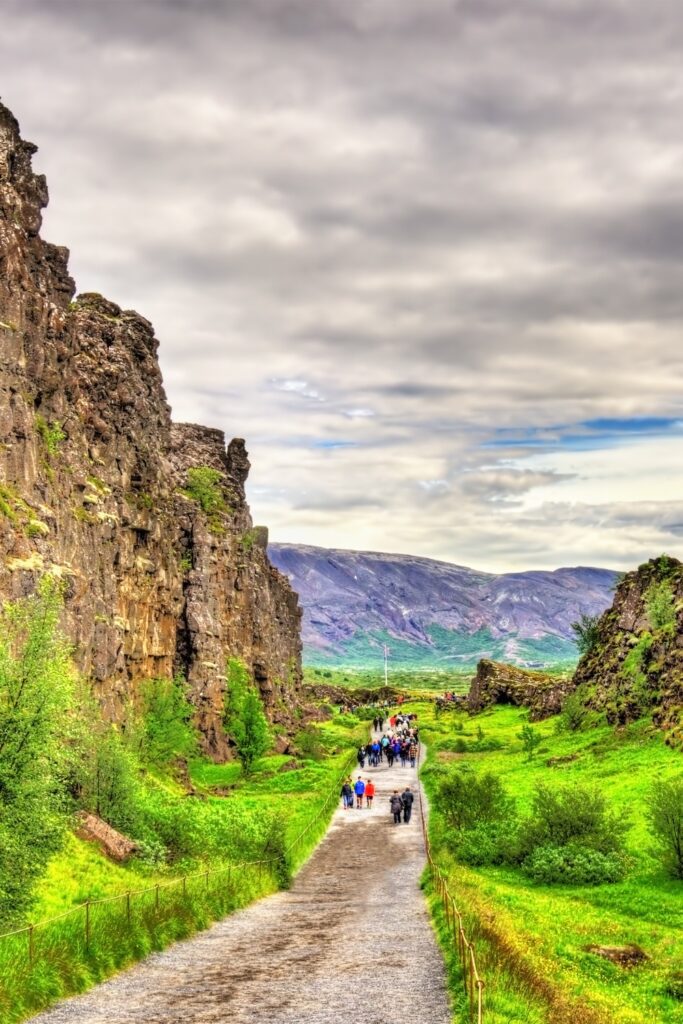
Stand, Walk, & Swim Between 2 Continents
Iceland is divided by the Mid-Atlantic Rift. Not only is it divided by this rift, but Iceland is the only country where the rift is above sea level. So, basically part of the island is on the North American tectonic plate and the remainder is on the Eurasian plate. And more interestingly, you can literally stand, walk, or swim between the two. To experience this geological wonder, head to Thingvellir National Park.
I am a swimmer. So, I completely geeked out at the idea of snorkeling at the Silfra Fissure in Iceland. The water in the fissure is some of the cleanest in the world, granting you an unhindered view into the depths. That said, the water in the fissure is un-stinking-believably cold!!!! Yes, they give you a dry suit to protect most of your body, but your hands and head are only protected by a wetsuit. Don’t be shocked if your hair is frozen when you finish! But it is totally worth it!
Not a swimmer? No problem. You can walk alongside each plate or take a stroll between the edge of the North-American plate through Almannagjá gorge. This hike ends at a nice waterfall called Öxaráfoss.

When to Travel to Iceland
Iceland is one of those locations you should really travel to more than once. While yes, you can get a “feel” for Iceland and mark it off your list of countries bucket-list in one trip, you cannot fully experience Iceland without seeing it in both summer and winter.
Iceland summers bring very long days and very brief nights. This is awesome if your goal is to see as many things as possible each day. It is particularly grand if you want to participate in the many hikes and rugged outdoor adventures the country offers.
Deep winter in Iceland brings very little daylight (about 3 hours/day) and long nights to stargaze and experience the Northern Lights. The Northern Lights are elusive in the best of times, so if that is your big draw to travel to Iceland then you want to visit in winter. You need a dark clear sky to witness the lights.

The Best Time to Travel to Iceland
To maximize your experience, consider traveling in March-April or September-October. Doing so should give you roughly 12 hours of daylight and 12 hours of night sky each day. These are also fringe months for Iceland travel so you will save a few bucks over summer rates.
What are your favorite things to see or do in Iceland?
Plan your trip!Tell us what you think below in the comments. You can also contact us and follow us on Facebook, Instagram and Pinterest so you never miss a post!

